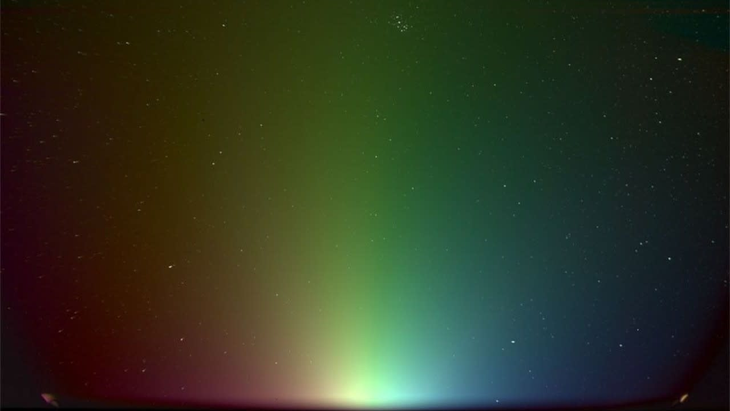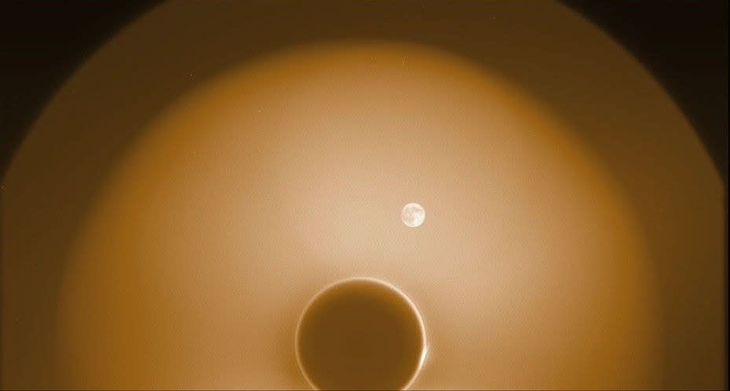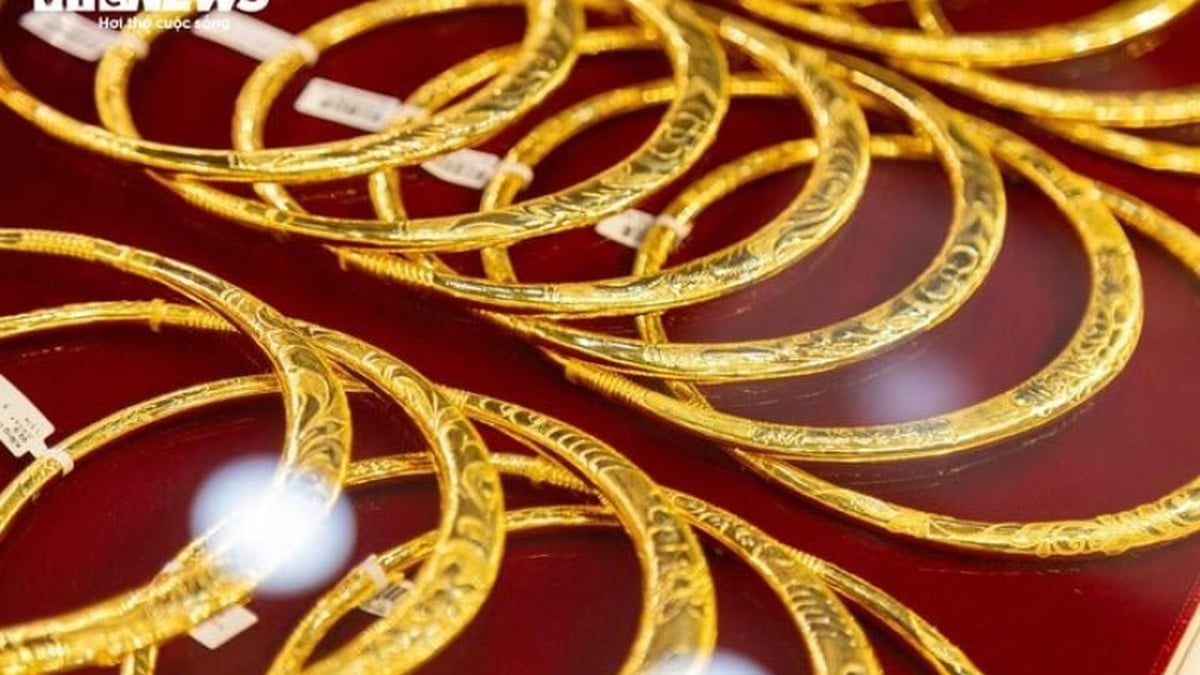
The photo simulates a colorful "rainbow" from the zodiacal light, a faint glow caused by cosmic dust reflecting sunlight - Photo: NASA
According to Space, the WFI-2 instrument on one of four satellites of NASA's PUNCH (Polarimeter to Unify the Corona and Heliosphere) mission has taken the first image through three consecutive polarizers, creating an impressive image showing the polarization of zodiacal light.
While not a true rainbow in the optical sense, the image shows a gradient of colors from red on the left, through green in the middle, and blue on the right, set against a backdrop of stars. This is a color simulation based on wavelength data, demonstrating the instrument's multidimensional analysis capabilities in studying cosmic dust and the Sun's atmosphere.
PUNCH is NASA’s new solar observation mission, launched into Earth orbit on March 11, 2025. The project consists of four small satellites operating in unison, tasked with capturing images and collecting data about the corona, the outermost layer of the Sun’s atmosphere, as well as the solar wind, the continuous stream of charged particles that the Sun sends into space.
One satellite is equipped with a Narrow Field Imager (NFI) that blocks strong sunlight to observe the corona in detail, while the other three satellites use Wide Field Imagers (WFIs) to capture the weak light at the outer edge of the corona and the solar wind.

The PUNCH mission's NFI camera captured the image of the new moon as it passed across the sun in the sky. In the image, the new moon appears full because it is illuminated by "geosphericity", the phenomenon of sunlight reflecting from the Earth onto the moon - Photo: NASA
Also during the April calibration phase, the NFI captured an image of the new moon passing across the sun. Using an occulter to block out the sun’s disk, the instrument captured an image of the moon illuminated by Earthshine, allowing the science team to confirm that the moon would not interfere with the mission’s instruments’ view.
On April 16, the WFI-1 and WFI-3 telescopes also recorded the zodiacal light with high precision, along with images of familiar star clusters such as the Hyades, Pleiades and the Andromeda galaxy.
These images are not only a first step in testing and calibrating the instrument, but also provide important data for studying the structure of cosmic dust and the behavior of the Sun's outer atmosphere.
According to NASA, by using the polarization method to recreate three-dimensional images of the corona and solar wind, PUNCH promises to open up new advances in the field of astrophysics, especially the understanding of space weather.
Data from the mission will contribute to improving solar storm forecasting models, helping to protect satellite systems, power grids and communications infrastructure on Earth from disruptive events from space.
Source: https://tuoitre.vn/nasa-ghi-lai-cau-vong-vu-tru-tuyet-dep-trong-anh-sang-hoang-dao-20250516090418718.htm




































































































Comment (0)